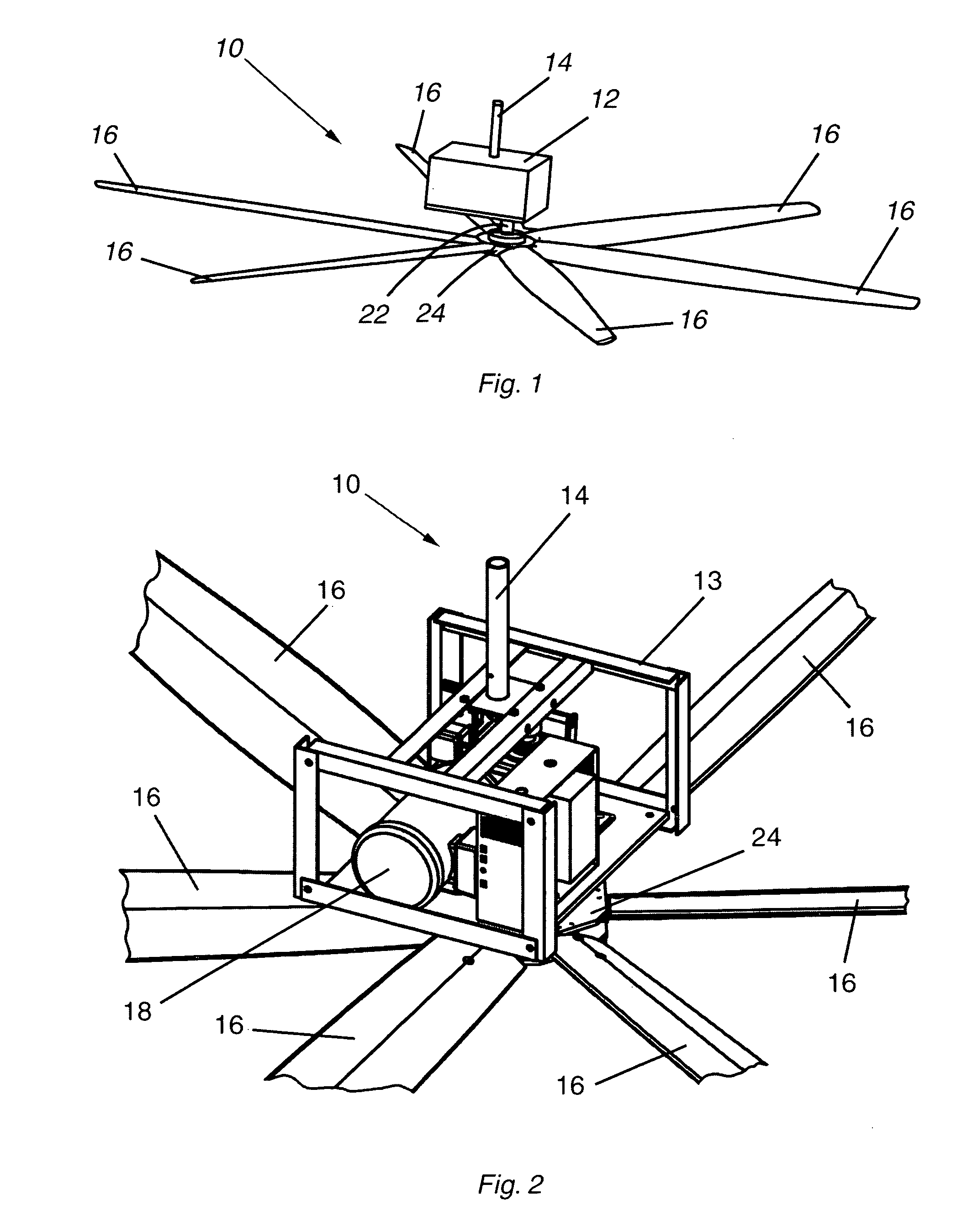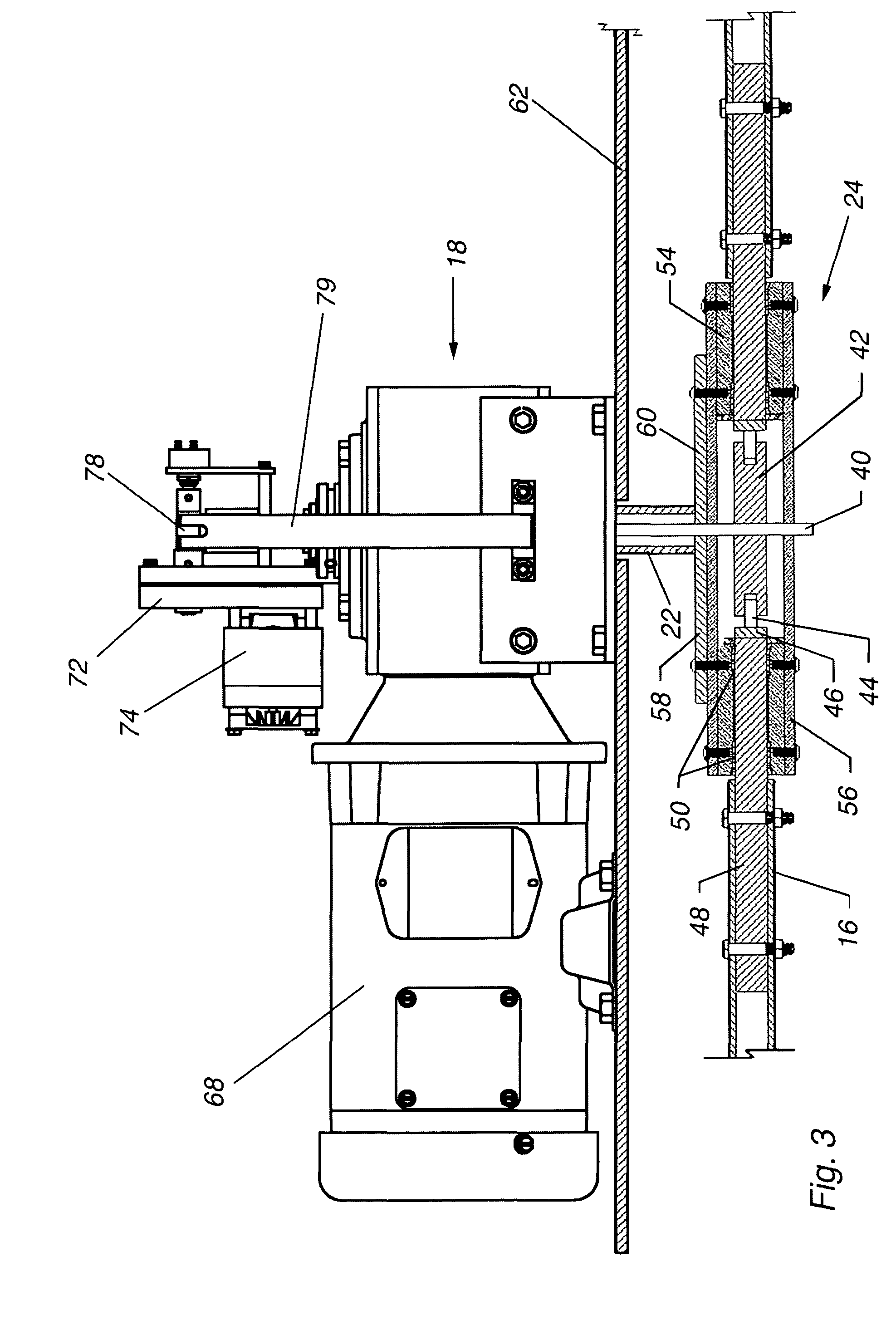High volume low speed fan
a high-volume, low-speed technology, applied in the direction of rotors, vessel construction, marine propulsion, etc., can solve the problems of inability to efficiently produce upward airflow, inherently limited contour variation of extruded fan blades, and require considerable and expensive post-processing, so as to achieve the effect of increasing airflow efficiency
- Summary
- Abstract
- Description
- Claims
- Application Information
AI Technical Summary
Benefits of technology
Problems solved by technology
Method used
Image
Examples
embodiment
Preferred Embodiment
[0046]FIG. 1 shows the HVLS fan in an embodiment with 6 blades. The fan drive motor is preferably powered by a type of motor drive circuit known as a variable frequency drive, (VFD) preferably mounted with the fan and controlled by a control unit having a portion that is accessible to the user. Note that the VFD is not shown in the Figures and that while the user-accessible portion of the control unit is located at a distance from the fan itself, other portions of the control unit including some sensors and circuitry are located with the fan. The VFD and the line voltage portion of the power electronics are located up in the fan enclosure, which simplifies installation as to wiring, and also provides a safer set-up since only low voltage wiring connections or alternatively remote or networked connections, without the need for costly power wiring and conduit, are necessary to connect to the user-accessible portion of the control unit. The fan 10 is shown with the ...
PUM
 Login to View More
Login to View More Abstract
Description
Claims
Application Information
 Login to View More
Login to View More - R&D
- Intellectual Property
- Life Sciences
- Materials
- Tech Scout
- Unparalleled Data Quality
- Higher Quality Content
- 60% Fewer Hallucinations
Browse by: Latest US Patents, China's latest patents, Technical Efficacy Thesaurus, Application Domain, Technology Topic, Popular Technical Reports.
© 2025 PatSnap. All rights reserved.Legal|Privacy policy|Modern Slavery Act Transparency Statement|Sitemap|About US| Contact US: help@patsnap.com



